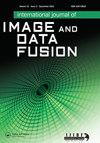利用AVIRIS-NG图像和有限的实地数据绘制零散耕地景观中的作物类型
IF 1.8
Q3 REMOTE SENSING
International Journal of Image and Data Fusion
Pub Date : 2020-01-02
DOI:10.1080/19479832.2019.1706646
引用次数: 17
摘要
摘要可耕地景观的分散性和多样化的种植模式往往阻碍了作物类型的精确测绘。遥感技术和数据挖掘方法的最新进展为这一测绘问题提供了可行的解决方案。我们展示了使用高光谱成像和集成分类方法的潜力,该方法结合了五个机器学习分类器来绘制印度古吉拉特邦阿南德区的作物类型。我们从下一代机载可见红外成像光谱仪(AVIRIS-NG)图像中导出了一组窄带/宽带指数,以表示光谱变化并识别目标类别及其分布模式。结果表明,最大熵(MaxEnt)和广义线性模型(GLM)具有较强的判别图像分类能力,MaxEnt的曲线下面积(AUC)在0.75至0.93之间,GLM的AUC在0.73至0.92之间。与单个模型相比,整体模型的准确度得分有所提高。我们发现光化学反射指数(PRI)和左右矩距比(MDRRL)是小麦、豆类和茄子等目标类别的重要预测指标。该研究的结果揭示了使用一类集合建模方法和具有有限野外数据集的高光谱图像来绘制自然界中分散的农业系统地图的潜力。本文章由计算机程序翻译,如有差异,请以英文原文为准。
Mapping crop types in fragmented arable landscapes using AVIRIS-NG imagery and limited field data
ABSTRACT The fragmented nature of arable landscapes and diverse cropping patterns often thwart the precise mapping of crop types. Recent advances in remote-sensing technologies and data mining approaches offer a viable solution to this mapping problem. We demonstrated the potential of using hyperspectral imaging and an ensemble classification approach that combines five machine-learning classifiers to map crop types in the Anand District of Gujarat, India. We derived a set of narrow/broad-band indices from the Airborne Visible Infrared Imaging Spectrometer-Next Generation (AVIRIS-NG) imagery to represent spectral variations and identify target classes and their distribution patterns. The results showed that Maximum Entropy (MaxEnt) and Generalised Linear Model (GLM) had strong discriminatory image classification abilities with Area Under the Curve (AUC) values ranging between 0.75 and 0.93 for MaxEnt and between 0.73 and 0.92 for GLM. The ensemble model resulted in improved accuracy scores compared to individual models. We found the Photochemical Reflectance Index (PRI) and Moment Distance Ratio Right/Left (MDRRL) to be important predictors for target classes such as wheat, legumes, and eggplant. Results from the study revealed the potential of using one-class ensemble modelling approach and hyperspectral images with limited field dataset to map agricultural systems that are fragmented in nature.
求助全文
通过发布文献求助,成功后即可免费获取论文全文。
去求助
来源期刊

International Journal of Image and Data Fusion
REMOTE SENSING-
CiteScore
5.00
自引率
0.00%
发文量
10
期刊介绍:
International Journal of Image and Data Fusion provides a single source of information for all aspects of image and data fusion methodologies, developments, techniques and applications. Image and data fusion techniques are important for combining the many sources of satellite, airborne and ground based imaging systems, and integrating these with other related data sets for enhanced information extraction and decision making. Image and data fusion aims at the integration of multi-sensor, multi-temporal, multi-resolution and multi-platform image data, together with geospatial data, GIS, in-situ, and other statistical data sets for improved information extraction, as well as to increase the reliability of the information. This leads to more accurate information that provides for robust operational performance, i.e. increased confidence, reduced ambiguity and improved classification enabling evidence based management. The journal welcomes original research papers, review papers, shorter letters, technical articles, book reviews and conference reports in all areas of image and data fusion including, but not limited to, the following aspects and topics: • Automatic registration/geometric aspects of fusing images with different spatial, spectral, temporal resolutions; phase information; or acquired in different modes • Pixel, feature and decision level fusion algorithms and methodologies • Data Assimilation: fusing data with models • Multi-source classification and information extraction • Integration of satellite, airborne and terrestrial sensor systems • Fusing temporal data sets for change detection studies (e.g. for Land Cover/Land Use Change studies) • Image and data mining from multi-platform, multi-source, multi-scale, multi-temporal data sets (e.g. geometric information, topological information, statistical information, etc.).
 求助内容:
求助内容: 应助结果提醒方式:
应助结果提醒方式:


